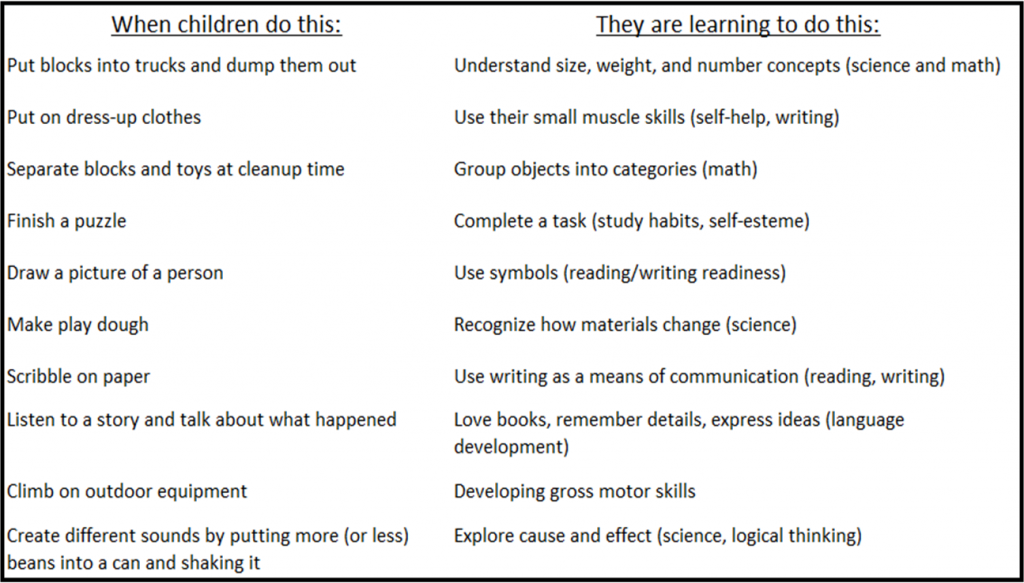Preschool Program
The activities we plan for children, the way we organize the environment, select toys and materials, plan the daily schedule and talk with children are all designed to accomplish the goals of our curriculum and to give your child a successful start in school. (More information on our philosophy can be found here.)
When you visit your child’s classroom, you see a room full of children playing. Like most parents, you probably wonder what your child is actually learning. Here are a few examples:
Sample Schedule
The following is an example of the general morning preschool schedule:
- 9:00 – 9:10 Greet each other. Each child is guided to a comfortable work place for independent play.
- 9:10 – 10:05 Divide into smaller groups for Teacher Directed activities and child choice play that includes, building, dramatics, problem-solving, math, science, Literacy, and art
- 10:00 – 10:20 Conversation time – large group meeting/large group activities
- 10:20 – 10:35 “Putting back in place” time, clean-up and bathroom
- 10:35 – 10:45 Story (quiet) time
- 10:45 – 11:00 Snack time
- 11:00 – 11:25 Outside play (All classes go outside every day when weather permits)
- 11:30 – 12:00 Lunch
A similar routine is followed in the afternoon sessions.
Class Sessions
Open Enrollment and Pre-K Counts sessions are from 9:00am until 3:00pm.
Note that during the 2025-26 School Year, Meadville Cooperative Preschool is not offering half-day sessions.
Extended Care Sessions
We offer extended care before school (7:00 am – 9:00 am) and/or after school (3:00 pm – 5:30 pm). This is a flexible program designed to accommodate working parents. It is meant to be utilized on a regular, scheduled basis.
We may be able to offer occasional extended care for students who are not enrolled in Extended Care, but it must be scheduled with the school more than 24 hours in advance, and is contingent upon availability of staff.
 Lunch
Lunch
The 11:30 a.m. – 12:30 p.m. period is a supervised lunch period. Children in the open enrollment program who are enrolled in the lunch program need to bring a lunch with them from home or enroll in our Lunch Program (see Application using the link below). All lunches will be refrigerated at the school.

